
- •CONTENTS
- •PREFACE
- •Pencils
- •Papers
- •Accessories
- •Holding the Pencil
- •Pressure
- •Movement of the Hand
- •Lines and Strokes
- •Introduction
- •Observation and Recording
- •Landscape Sketching
- •Trees
- •Trees in the Foreground
- •Trees in the Background
- •Landforms
- •Water
- •Architecture
- •Sketching the Cityscape
- •SKETCHING FROM MEMORY
- •EXAMPLES
- •INDEX
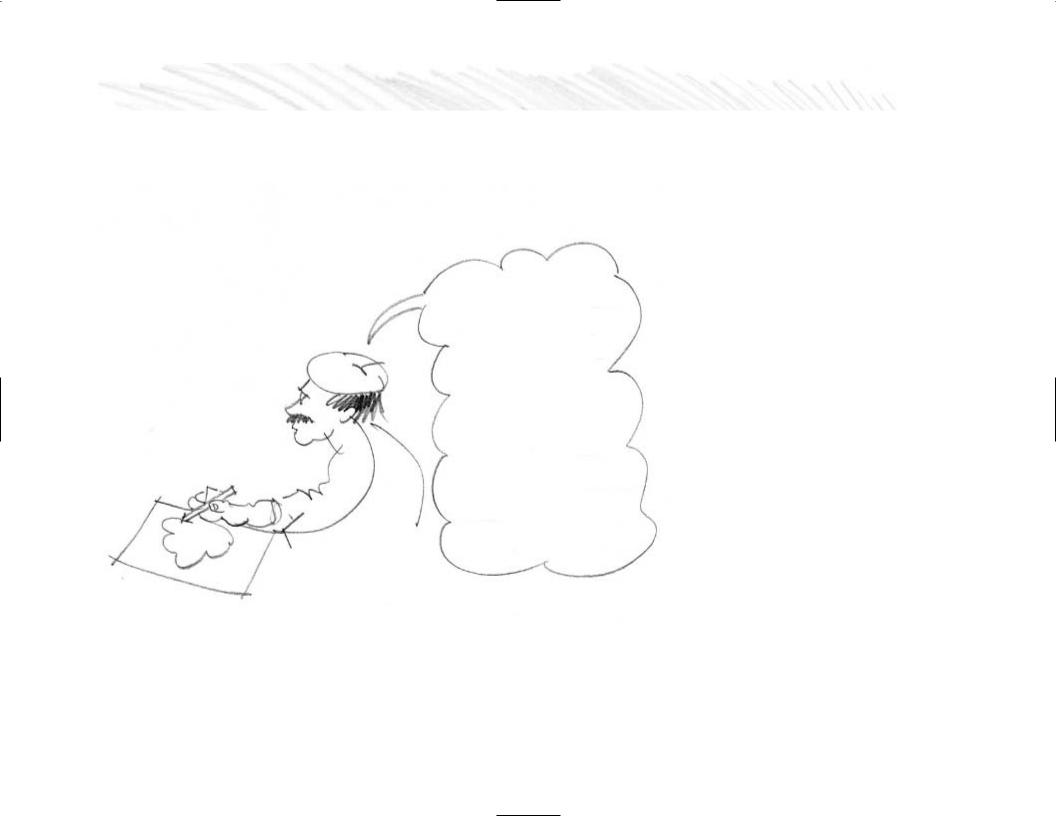
SKETCHING FROM MEMORY 6
• recall images
• select/scale images
• sketch
• compose and rearrange
• sketch and visually judge
Sketching
The sketch
Sketching from memory
I believe sketching from memory is a discipline that produces great designers. Design is, after all, a creative process that involves recollection and imagination. Sketching from memory deals with the recollection of imagery, perhaps from many different situations, and rearranging them to make a new composition. This is design. It takes imagination to put these images together; and new images (sketches) are often the vehicles that help the designers visualize their new designs. Therefore, design effectiveness to some extent depends on the speed and fluidity of recollection and sketching.
Sketching from memory requires a resourceful memory bank and the only way to stockpile the memory bank is through creative seeing and on-the-spot sketching. The more you sketch, the better you can remember. Many students can draw trees and buildings well but find it difficult to tackle cars or people. The reason is very simple. They seldom spend time observing people and cars; they seldom observe the relationship between different parts, how they interact, how they
85
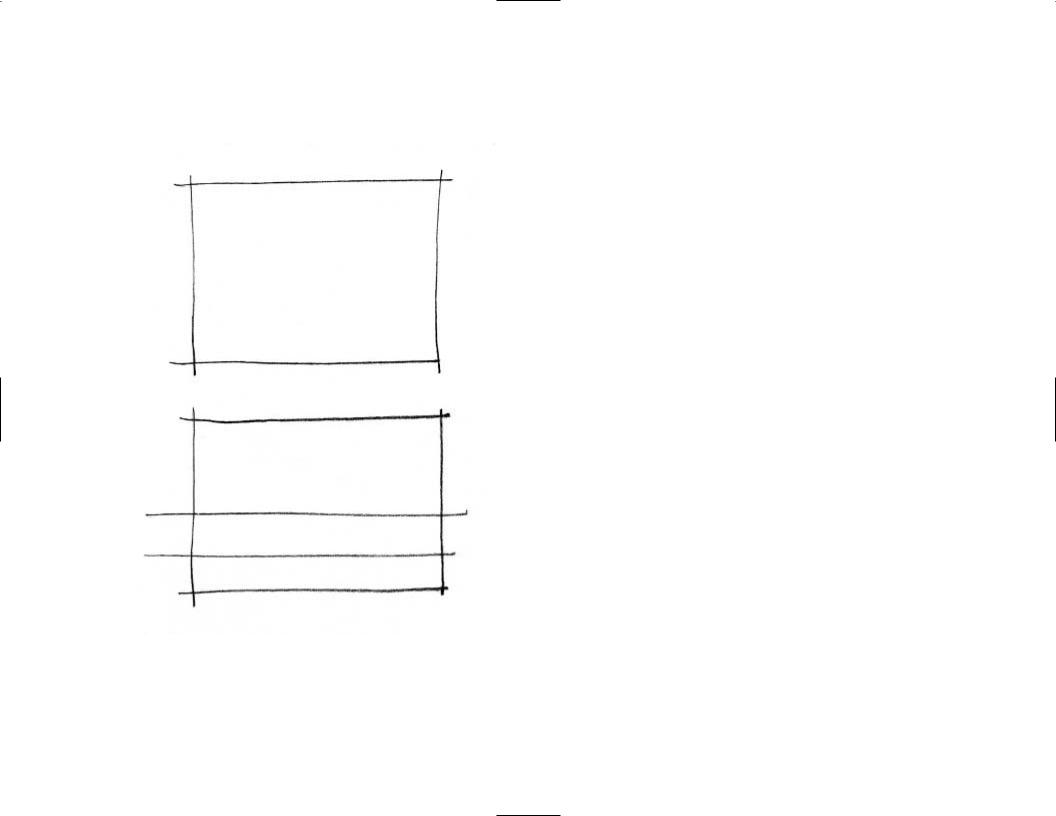
1.
Horizon
Ground line
2.
SKETCHING FROM MEMORY
1.You must first establish a reference frame (a way to contain the image area).
2.Horizon: i.e., eye level Ground: foot level
The assumption is that the normal distance between horizon and ground is approximately five to six feet. This establishes a reference scale.
86

• The center of vision/vanishing point (CV/VP) can be anywhere along the horizon.
• Diagonal perspective lines radiate from the center toward the four corners of the picture frame.
3. CV/VP is at the middle.
3.
4. CV/VP is off to one side.
4.
c. |
CREATIVE USE OF VISUAL SCALE |
a: Take the distance between |
|
|
horizon and ground as five feet. |
|
b: Repeat the same distance on |
|
the ground line three times to |
|
get 15 feet. |
|
a. |
|
c: Transfer the 15 feet up as |
|
vertical reference line. |
b.
affect textures, and how they modulate light and shadow. The physical eye is very similar to a camera’s lens. It captures everything without discrimination and filtering. Creative seeing, as described in the previous chapter, is a selective seeing process. Our eyes must search, identify, compare, isolate, and filter everything we see. This in combination with a methodical way of sketching will make sketching from memory an easy and natural task.
Depending on the subject matter you want to sketch, the first step in sketching from memory is to draw a horizon line across the entire page. Pick a center point on this line and draw two lines from the center towards the lower left and right corners. Then draw a second horizontal line across the page approximately one inch below the first horizon line. At the two points where this lower line intersects with the two diagonal lines, draw two vertical lines about 3 to 4 inches high. This move establishes a framework for all the recalled objects. The distances between the reference lines are all relative and must be judged with your eyes from trial and error. Likewise, the scale and size of the objects can be adjusted accordingly.
87
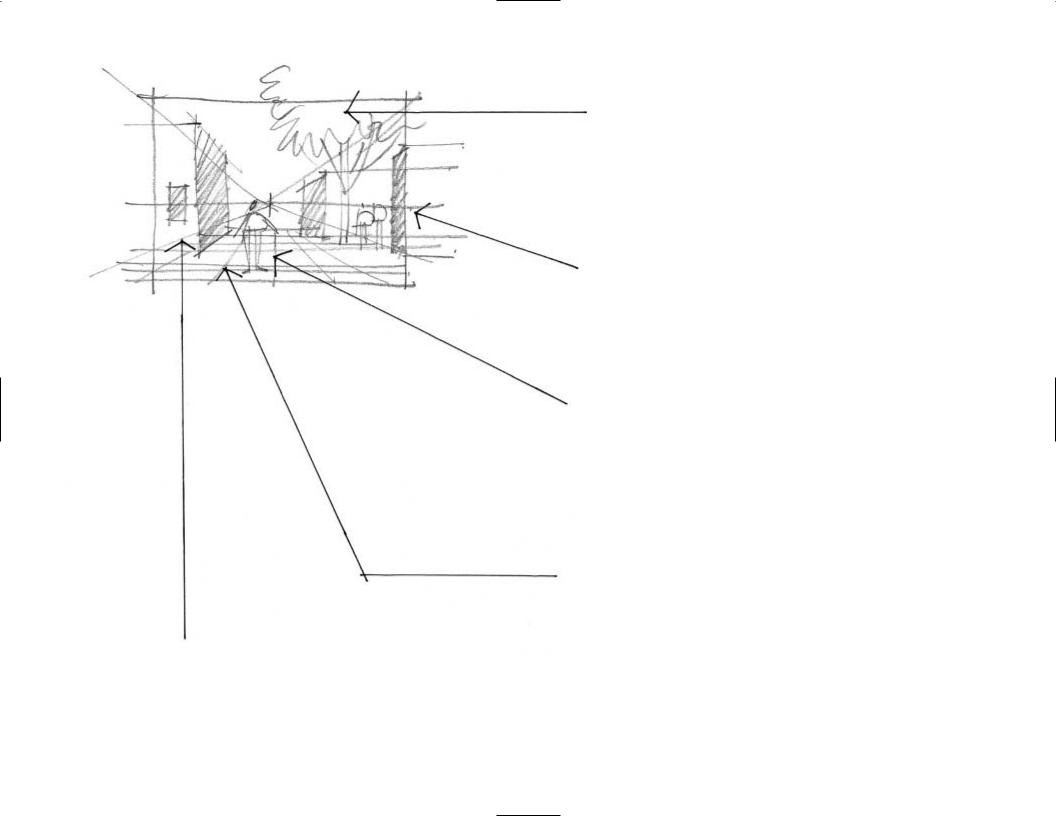
Use initial 15-feet reference to approximate the bottom of the tree canopy.
Use initial 15-feet reference to construct shorter buildings.
Put a larger human figure in front to suggest the depth of space.
Extend horizontal lines forward to suggest pavement.
Use initial 15-feet reference to construct the side of the building. Set the window at a certain height.
88
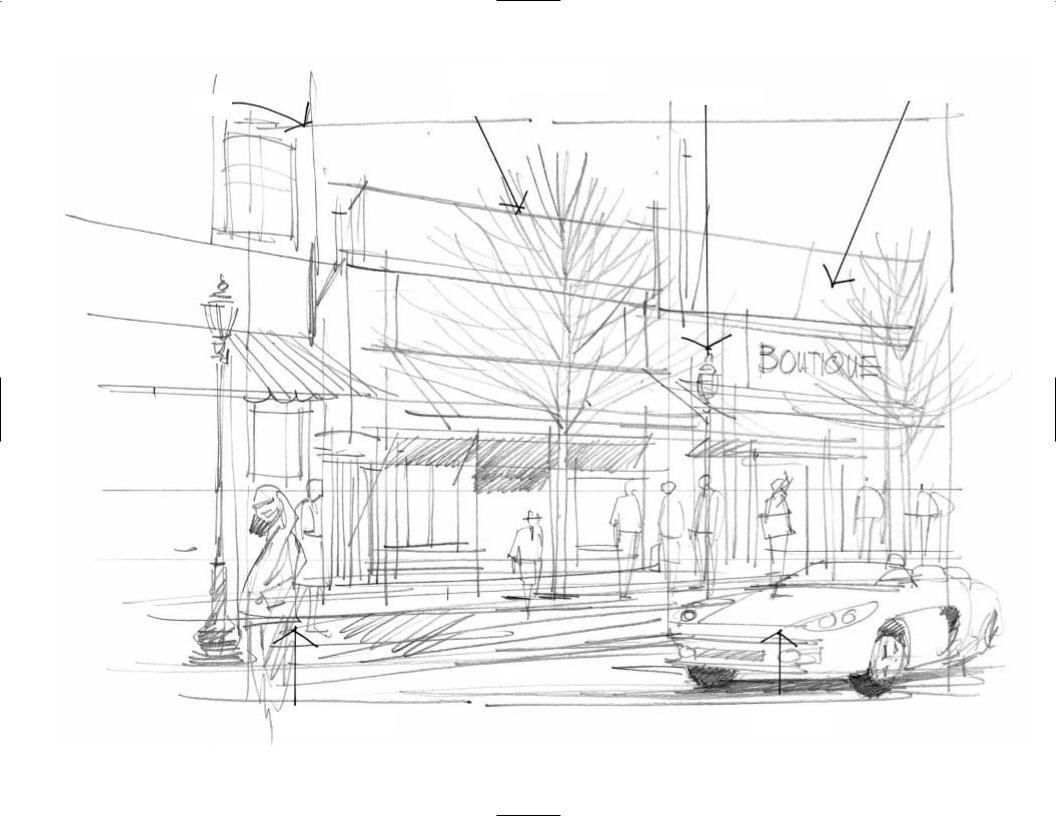
RECALL IMAGES
Streetlight |
Stores |
Frame |
Trees |
Foreground figures |
Sports cars |
89
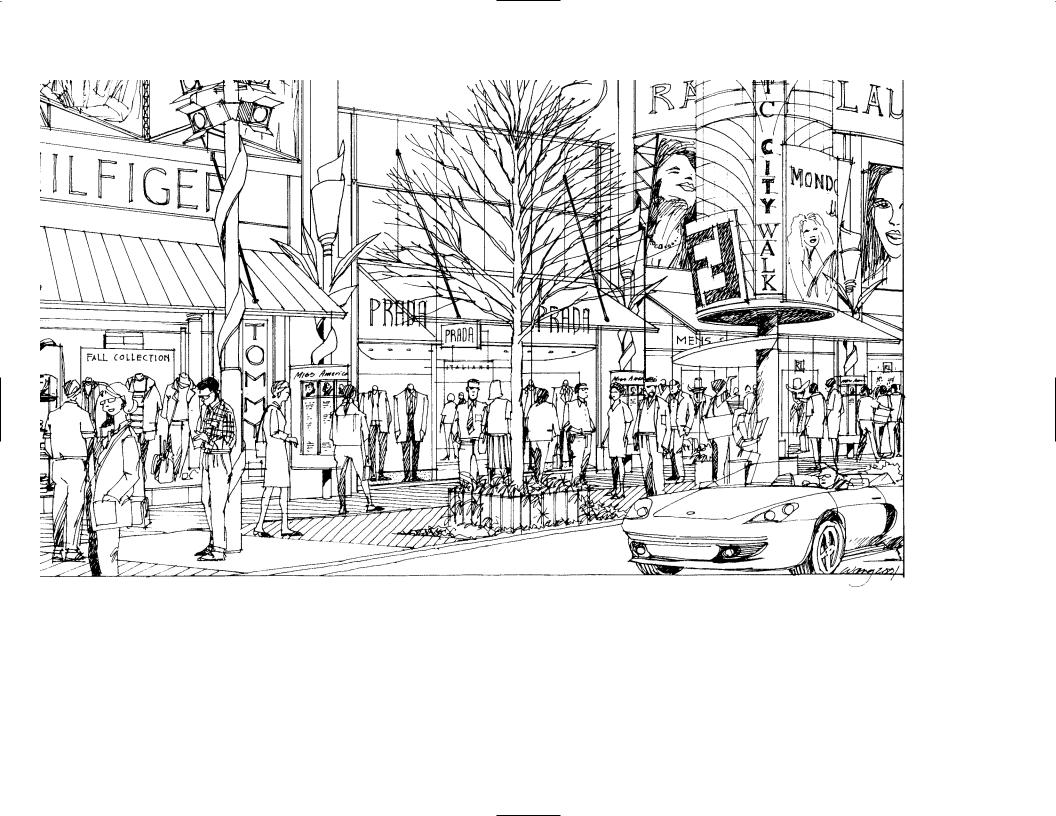
Finished drawing in pen/ink (mark-up sketch done in pencil).
90
